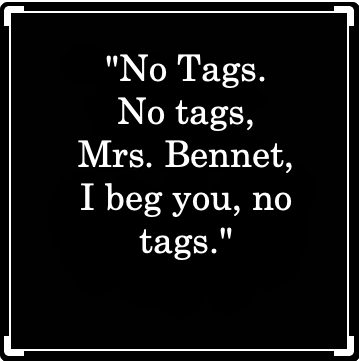Killing Tags
Tags are the little identifiers, telling the reader who is talking. One of the cardinal rules in writing is “show, don’t tell.” Tags like, “said Kate,” tell us that Kate is talking. If we used “whined Kate” or screamed Kate,” we are telling how Kate said the words. Even Kate “retorted,” doesn’t show the reader what Kate is doing.

When I started teaching in 1968, someone gave us a mimeographed sheet of replacement words for “said.” In those days, we didn’t know how to teach kids to write, and I thought I had been given the answer to good writing. Murmured, mumbled, whispered, simpered, choked, yelled, bellowed, screamed, and yes, retorted were on the list.
How it Works
Paragraphs are the writer’s friend. Each paragraph is owned by a character. Think of this as a movie or television program. If three cameras are used to accomplish the “on stage” scene with two characters, one camera is for Character One and often looks over the shoulder of Character Two. This lets the viewer see the action of the person speaking. Hopefully, they are not standing, pumping their hands up and down for emphasis. The second camera looks over the shoulder of Character One when Character Two is speaking. The third camera is a pullback, showing both characters—good for a hug or kiss.
Think of each of the three cameras as a paragraph. Change the camera, change the paragraph. When a paragraph is indented, and there is dialog, the reader knows that someone owns the paragraph. Any action is their action, and any dialog is their dialog.
Dialog From Members of the Cast
Members of the Cast is not perfect. It didn’t always look the way it does today. I rewrote the opening 80 times and quit counting. Below are examples of tag vs. no tag writing. (I never wrote the dialog in red but changed the original to show “taggy” writing.)
“Your father’s grant came in a year early,” Mother said.
can be
“Your father’s grant came in a year early.” Mother used her, “isn’t this the best news” voice.
“Oh. When?” Margo queried. (AAAHHHH!)
At this moment in the chapter, I decided to show the reader a bit more of the scene, and I needed to split “Oh” and “When?” into two paragraphs. I used a separator paragraph—possibly camera three.
Margo couldn’t muster an answer right away, finally offering a quiet, “Oh.” (I know this is close to a tag, but hopefully, I convey a young girl standing, watching a hopeless situation unfold.)
With an exasperated sigh, her mother wrestled with a mixer beater held in a headlock by the tangled cord. (The Separator)
“When?”
Mother wrestling with a mixer beater shows how tense the moment is. The following paragraph is Margo’s, and “When?” has no tag. I would not suggest, “When?” Margo asked. The question mark shows she asked, and the reader will get that without being told.
Continuing with Too Many Tags
We’ll need to leave soon—two weeks,” Mother meekly murmered.
“How long will you be gone?” Margo wondered.
“Well—until June,” Mother said. “You know, Aunt Louise is too sick for you to stay with her—this time,” she added.
Notice how clogged the above red lines are. The poor reader has to skim over redundant, telling information.
What is in the Book
Mother stabbed at the underside of the mixer, the chrome shaft locking into place. “We’ll need to leave soon—two weeks?”
“How long?”
“Well—until June.” Potatoes plopped into the colander, earthy steam floating to the ceiling. “You know, Aunt Louise is too sick for you to stay with her—this time.”
There has not been one comma-quotation-mark-tag in the blue lines above. We know Mother is cooking, and Margo is not doing much of anything. And that is the scene exactly. A 17-year-old in shock that her parents are leaving again, and her mother hiding behind her cooking when she delivers the news.
You may have noticed, Mother has a “tell.” She delivers a line with a little pause (em dash) followed by the zinger. A tell can be handy, eliminating the need for a tag—it’s the way Mother talks.
Think about the redundancy of tags. If you use them, I suggest putting 95% of them after the dialog because the reader has no interest in murmuring or mumbling.
There are times when we may want to describe how a character says the words. I do occasionally use a tag for that purpose, but I am not using the tag only to identify the speaker:
Margo whispered, “No. Am I in trouble?”
When Margo is being questioned in the school office, I wanted the reader to know that she has been reduced to whispering, so I put it before her dialog. She’s scared. It is also a scene with four characters in the room, and sometimes we need to tell the reader who is talking.
Remember, it is your book and your writing but consider killing the tags. Let the reader see and watch the speaker move in the scene. Happy writing!
If this blog hit you like a gob of mud in the face, I wrote a follow-up article, If You Must Play Tag.
If you wish to read more of Members of the Cast, it is on Amazon.
726 total views, 1 views today